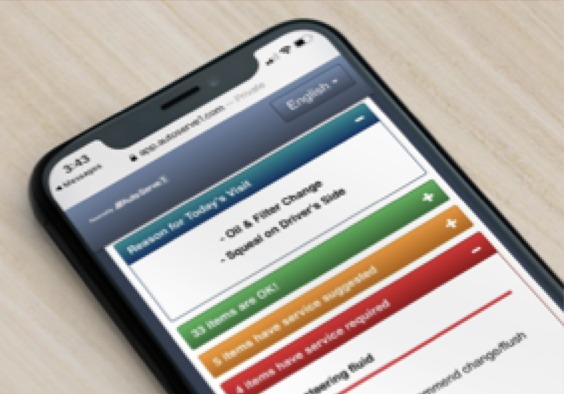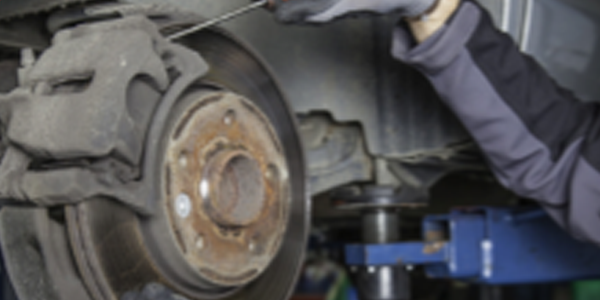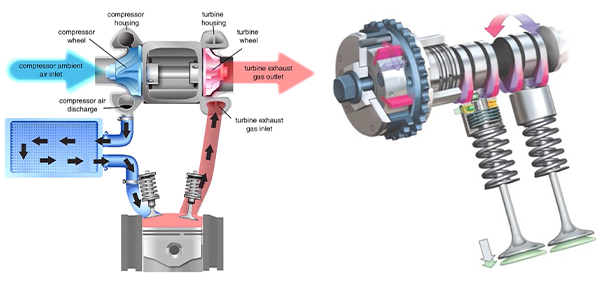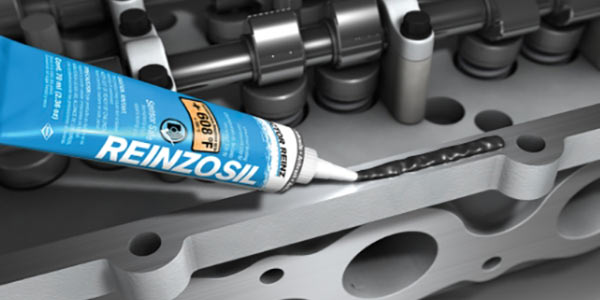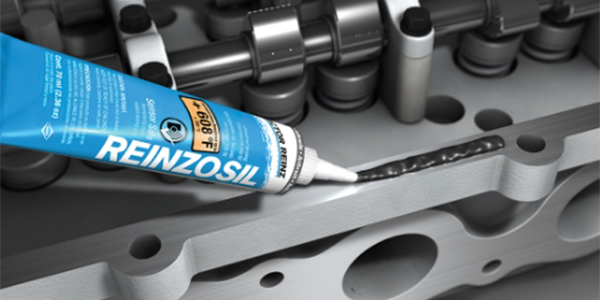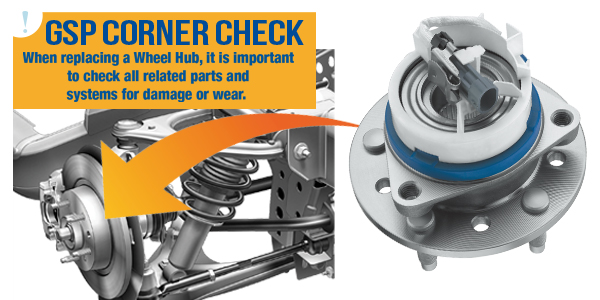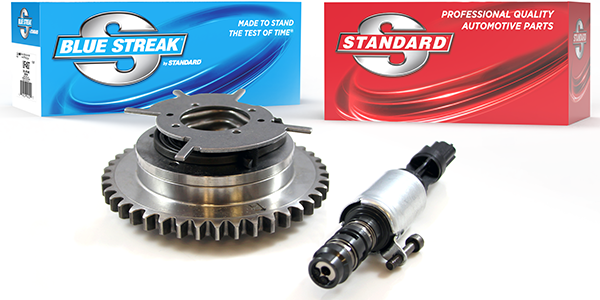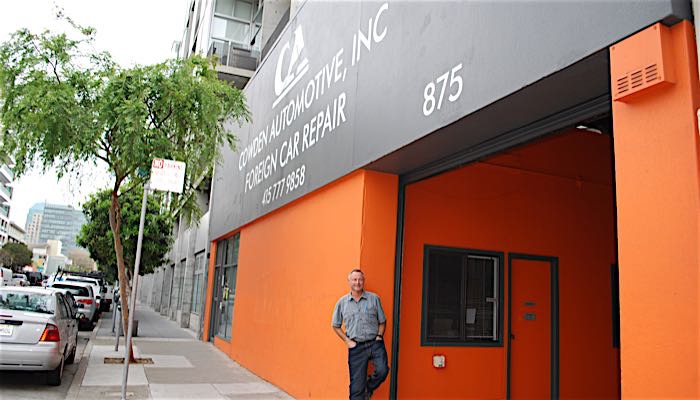There’s no time to hesitate.
The surge in the aftermarket sweet spot — or vehicles in the six- to 12-year age range that will soon require significant repairs — reached 94 million in the first half of 2021, according to Experian Automotive. That total accounts for nearly 31% of all vehicles in operation.
That percentage should rise as vehicles sold during the automotive industry’s five-straight 17 million-unit years (2016-2019) enter the aftermarket sweet spot between 2022 and 2025. That’s three years of considerable growth in service opportunities for repair shops, but events like 2021’s microchip shortage and the global pandemic will leave a mark. So that window of opportunity to improve your business and emerge stronger won’t stay open long.
Chances are you’ve heard of Text-to-Pay’s emergence during COVID-19, but adopters realized other benefits — many financial (reduced overtime pay and increased car count due to greater efficiency) — outside of offering pandemic-weary customers a contactless experience. In fact, the pandemic provided enough proof that running a business on QuickBooks or pen and paper won’t cut it for much longer.
This guide is designed to help you understand the true ROI of a full-featured SMS. Here are six signs your business is primed for a technology upgrade:
1. You Can’t Manage Your Parts Returns or Core Credits
Ranging between $20 and hundreds of dollars, not managing core credits and parts returns can become a severe drain on your bottom line.
This is where a combination of software-driven and manual processes can help.
First, make sure your techs know which parts have and don’t have cores. The parts invoice serves as your best clue. One recommendation is to instruct technicians to place used parts in the new part’s box before bringing it to the front counter, as some suppliers won’t give credit if they aren’t.
Next, determine which cores you want to track. You can base that on which parts have a greater value, the ones you see most often, and how you pay your technicians. Additionally, designate an area for new arrivals once the service advisor signs for them. The advisor will then enter the part on the invoice and the part number into whatever management system your shop employs before delivering it to the tech.
For part cores, designate specific areas for each vendor. Once the vendor collects the core, get a return slip, and compare it to the stated credit to ensure the cost is correct. At the end of the month, gather up all invoices and match all credits with the return slips.
Parts you need to return also require a designated bin. Additionally, return slips the supplier writes out should be attached to the invoice. Make sure each supplier has a separate file for return slips and invoices, and make sure to get all returns before the end of the month. You don’t want to pay for them and have to wait for the credit. Hey, those are real dollars.
You can manage all these steps with pen and paper, but your best bet is to drive this process with an SMS. It should allow you to track returns, warrantied parts, credits by vendor and the number of parts received, as well as record credits, confirm costs, add parts to inventory, and much more.
2. You manage your fleet business with IOUs.
Delving into the fleet business can help bring stability through those highs and lows while adding significantly to sales and net profit. However, it can also be a significant risk if not handled correctly. In other words, managing IOUs is not the way to conduct this portion of your business.
Fleets often demand substantial discounts, require priority service, and are notoriously slow payers. Some fleets don’t pay their accounts at all, leading to write-offs and loss of profits. Among the many considerations you’ll need to make is to determine your credit and collection policies, as most fleet clients prefer to receive a monthly bill showing all vehicles serviced versus paying for each repair.
That means you need to determine if you intend to extend credit, how much you can afford to extend, and under what conditions. That may require a conversation with a business consultant and/or your accountant to determine what your cash flow will allow or if you need to consider a line of credit. The latter means you need to generate enough gross on the additional financed sales to offset the interest costs.
Most consultants will recommend against using discounts to encourage prompt payment. That way, should you elect to extend credit and need to collect on a delinquent account via a collection agency or through the courts, you’d pursue full prices vs. discounted prices. Either way, it’s advised that you ask an attorney to develop a credit and collection policy that includes a personal guarantee clause and credit application form, as well as whether you’ll use the service of a collections agency.
Your shop management system should do the rest, allowing you to use charge accounts to invoice tickets. Your SMS should also be able to generate a report detailing all repairs and expenditures. Fleet managers might not want that emailed to them on every job, but they will eventually make that request once their bean counters start asking why and how much they’re spending with you.
3. You can’t sell merchandise or parts over the counter effectively.
If your branding efforts have created demand for anything with your logo — think t-shirts, can koozies, or maybe a tumbler — or the classic muscle car you take to the local car shows has made your shop a destination for collectors looking for specialty parts, you need a way to record those over-the-counter sales.
Some entry-level SMS or accounting tools won’t allow your staff to record the sale without entering a customer and vehicle. That’s a clear sign it’s time to upgrade. The reason, especially when it comes to shop merchandise, is knowing how many t-shirts you sold tells you how many to order the next time you’re out of inventory.
Now, what happens when a do-it-yourselfer comes to your shop wanting to buy an air filter? Can your accounting software or SMS record that sale without a vehicle or customer?
Limiting parts obsolescence remains a huge topic for parts departments. What’s your plan for ridding your shop of those special-order parts that were never picked up or those improperly tracked parts orders? How about wholesaling them to other shops in the area? To do that, not only will you need to record those sales, you’ll need an SMS that can report on those special orders, open ROs, or open counter tickets.
4. You’re double-entering expenses and receivables into your accounting platform.
As the old saying goes, one of the best ways to plan is to look back.
That means being able to pull up all your invoices and adding them up to calculate your total revenue for the year, quarter, and month. Managing your finances also means tracking expenses and knowing where your business spends money.
A shop management system that integrates with accounting software like QuickBooks or features built-in accounting tools eliminates double entry and the possibility of errors when entering expenses and receivables. And once you know how much you brought in and spent, you’ll be able to calculate your profits. Hopefully, you’re generating more revenue than you’re spending on expenses. Either way, now you can start planning with an accurate financial forecast.
Having a payment processing solution integrated with your SMS is equally important, making daily account reconciliation possible and faster. Just think about the time savings from not having to print out a batch report from your card terminal and matching transactions recorded in your SMS. Instead, your card processing solution will pull the invoice data from your SMS and send it to your accounting tool that’s integrated or housed in your SMS.
5. Delayed payments
Customers that can’t pick up their vehicles until the next day are getting out of hand.
That’s especially annoying on those $1,200 tickets. You’re not running a bank; you’re running a repair shop that relies on cash flow. This situation is another reason you need an SMS-integrated credit card processing solution that offers Text-to-Pay capabilities. Not only does it eliminate reasons for not getting paid today, you reduce your liability since the transaction happens in your card-not-present provider’s digital domain. Some providers even offer fraud protection, which might be enough to get a break on your insurance.
Also consider that, according to the Federal Reserve, 40% of Americans would struggle
to come up with even $400 to pay for an unexpected bill — half of them have maxed out credit cards. In a poll conducted by The Ascent prior to the pandemic, the financial advisory site found that one in five Americans are dependent on their credit cards to pay for basic living expenses. Eliminate that payment conversation — and the possible embarrassment of a decline — with Text-to-Pay and use that time to schedule their next appointment or communicate your plan for their next visit.
At the very least, consider an SMS-integrated card-present processor, because turning your back on customers and stapling receipts to their copy of the invoice do not equate to a memorable customer experience.
6. Customers keep declining services or asking
“What’s the reason for all these repairs?”
The four pillars needed for any aftermarket repair shop to make more money include:
1. You need a car.
2. You need to inspect the car.
3. You need to estimate 100% of the work.
4. You need to present 100% of those estimates.
The beauty of a DVI solution is that you never have to wonder if your mechanics pick and choose what they want to do. You also never have to wonder if your service advisors are telling customers whatever story they want. The right inspection tool means transparency for your customers: It’s not you telling a customer she needs brakes; it’s a picture of her brakes — maybe a video — and a short blurb explaining why your recommendation is so important.
A DVI tool also means transparency for you, as the right solution should allow you to monitor completed inspections and how many include photos and video. It should also tell you how many inspections were sent to customers via text if the solution you employ offers that capability.
The reason you want that texting functionality is it ensures all recommended services are presented. Unfortunately, even the best salespeople can hesitate to present all recommendations, which prevents you from capturing that low-hanging fruit like air and cabin filters or the manufacturer- recommended 90,000-mile service.
Combine all that with Text-to-Pay and you’ll never hear a customer complain about your shop always asking for money. In fact, your customers may never have to field or make that call again with the right DVI tool. As any shop owner will say, you can’t properly perform a preventative maintenance analysis without one. It’s the new normal.
You’re the Boss with Shop Boss
Shop Boss is an attitude — the control shop owners feel when they click into the auto repair market’s fastest, web-based shop management system from any WiFi-enabled device. Featuring key integrations and every tool needed to facilitate daily operations, Shop Boss is easy to use, driven by customer feedback, and meticulously designed by a former shop owner.
Click here to learn more about what Shop Boss can do for you
This article is sponsored by: Shop Boss



